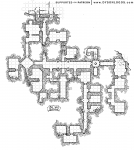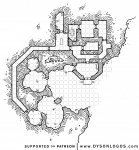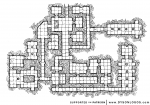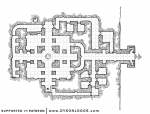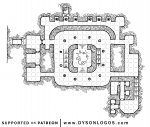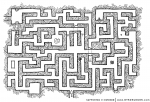Dyson Logos
Hero
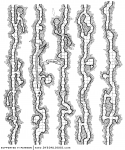
When travelling the depths of the underdark, there are passages and caves that most “civilized” denizens ignore because they are small, narrow, and fraught with obstacles. These “tertiary” passages sometimes make for useful escape or access tunnels and these have their connections to the primary and secondary passages concealed behind secret doors or other hidden access points.
Tertiary tunnels are usually about ten feet wide with ceilings between 8 to 25 feet with an average of 15 feet or so. While drow still patrol these passages, encounters are more frequently with monsters such as xorn, lurkers above, trappers, mind flayers, and various underdark vermin.
This set of tertiary passage geomorphs includes a redraw of the original from Descent into the Depths of the Earth (on the far left), along with four new example passages for use when handling encounters along these nearly abandoned and secret byways.

